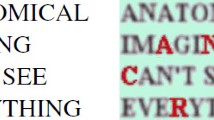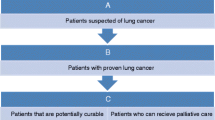Abstract.
Although radiography, computed tomography and magnetic resonance imaging are still the methods of choice for the study of lung cancer, they have certain limitations in the determination of the nature of suspicious lung nodules, the evaluation of mediastinal involvement, the assessment of the viability of previously treated lesions and the diagnosis of tumour relapse. There is a wide range of current oncological requirements related to lung cancer: detection of malignant lesions at the earliest stage and in the most effective way; the definition of the biological characteristics of a lesion (proliferation, aggressiveness, differentiation, etc.); the need to define the operability of the patient (function of residual lung and staging); and the need to evaluate the behaviour of the tumour (response to therapy, early detection of recurrences, metastatic spread). Most of the efforts of the nuclear medicine community have been focussed on diagnosis, staging, restaging and therapy monitoring of lung cancer. Many radiopharmaceuticals have been employed for this, including gallium, monoclonal antibodies, somatostatin analogues, lipophilic cations and positron emission tracers. There is ample evidence that nuclear medicine techniques may provide complementary information with respect to anatomical imaging, for example in the assessment of preoperative function by means of ventilation and perfusion scintigraphy, or in tumour localisation by means of specific tumour-seeking agents. However, clinical data suggest that, when properly used, nuclear medicine procedures in some cases may be not only complementary to radiology but essential for the clinical management of lung cancer. An example of such a procedure is fluorodeoxyglucose positron emission tomography (FDG PET) the introduction of which has greatly contributed to confirmation of the clinical value of nuclear medicine in this field. FDG PET has proved of great help in lung cancer management and its cost-effectiveness in lung cancer staging is firmly established. In this review the results of the most important nuclear medicine techniques are summarised and their value in clinical practice is discussed. General, updated information is provided about the epidemiology, biology and clinical management of lung cancer, and about the role of nuclear medicine in these areas.
Similar content being viewed by others
Author information
Authors and Affiliations
Rights and permissions
About this article
Cite this article
Chiti, A., Schreiner, F., Crippa, F. et al. Nuclear medicine procedures in lung cancer. Eur J Nucl Med 26, 533–555 (1999). https://doi.org/10.1007/s002590050422
Issue Date:
DOI: https://doi.org/10.1007/s002590050422




